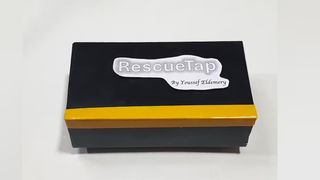
Caregiving is a stressful job in itself but worrying about your loved ones when you aren't around only adds to that stress. Thankfully, we live in a world with brilliant minds like maker Youssef Eldemery, who's created an affordable open source Raspberry Pi-powered solution called RescueTap. This device does exactly what it says Sending caregivers a notice when emergencies happen, all from the the tap of a button.

RescueTap has a few features baked into it that can be used as the situation requires. It has things like a GPS notification setup and even sensors that can help detect potential falls. There are also some manual functions to trigger alerts for things that are harder to automate and detect.
RescueTap is intended to be a wearable system, powered by a battery pack. It has a gyroscopic sensor that can be used to interpret when a fall may or may not have occurred. A buzzer will go off when an alert has been sent along with an LED that flashes. It's also possible to cancel false alarms and alerts that weren't supposed to trigger.


The main board powering RescueTap is a Raspberry Pi 4 but you could also use the latest Raspberry Pi 5 or even a Raspberry Pi Zero 2 W. The Pi is connected to an IMU module, buzzer, LED and buttons for input. The cool thing about using a Pi for this project is how much flexibility you have to add extra modules—for example a camera that could snap a photo when alerts are sent to show the caregiver what's going on in the environment.
The project page at Hackster has lots of juicy details about how the project works and was assembled. The Twilio API is used in conjunction with Whatsapp to handle the notification messaging. That said, the full source code is available over at GitHub for anyone who wants to recreate the project or just get a better idea of how it works.
If you want to get a closer look at this Raspberry Pi project in action, you can check out the full project page over at Hackster and see a demo video shared to YouTube.
Stay On the Cutting Edge: Get the Tom's Hardware Newsletter
Get Tom's Hardware's best news and in-depth reviews, straight to your inbox.

Ash Hill is a contributing writer for Tom's Hardware with a wealth of experience in the hobby electronics, 3D printing and PCs. She manages the Pi projects of the month and much of our daily Raspberry Pi reporting while also finding the best coupons and deals on all tech.
Most Popular



